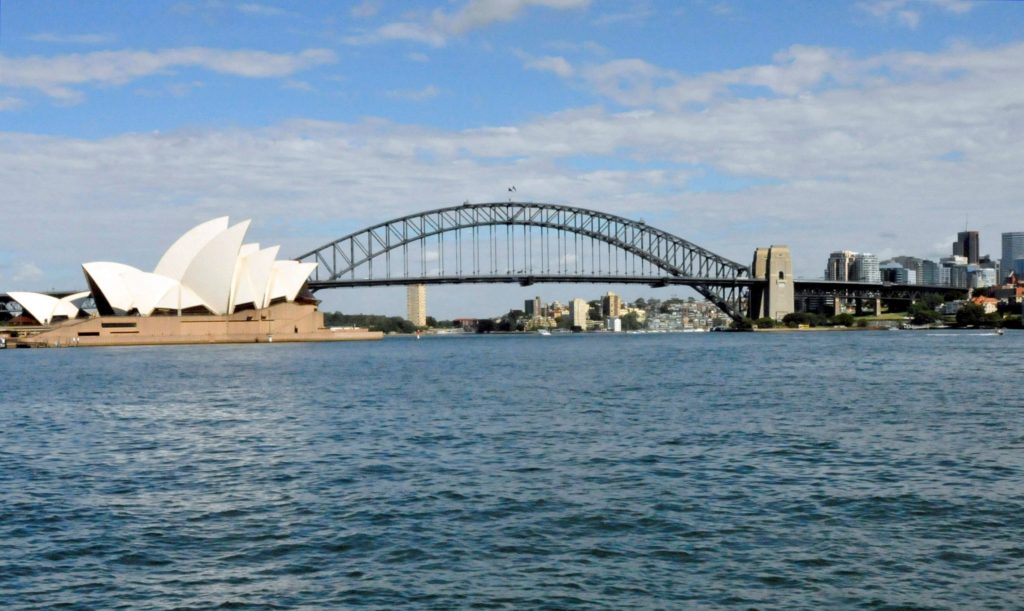
The Sydney Harbour Bridge stands alongside the famed Opera House as symbols of Sydney, Australia. Residents once doubted that the bridge, dubbed the Coat Hanger for its shape, was safe. Now they can climb it lawfully.
Sydney began as an English prison colony on the south side of Sydney Harbour in an area called the Rocks. In 1815, an English architect sent to Sydney for forgery proposed a bridge connecting the Rocks to the north shore of the harbor. Nothing came of that and similar proposals floated over the next hundred years. At the end of World War I, the government of New South Wales approved building a bridge across the harbor using a so-called “through arch” design inspired by New York City’s Hell Gate Bridge. In such a design, abutments at the bases of the lower arches support the entire weight of the bridge, but local residents were skeptical that such a design would be safe. To gain public confidence, the builders added four concrete and granite pylons atop the abutments, whose only function was ornamental. Before the bridge opened in 1932, 96 steam locomotives stood end to end on the bridge’s four railroad tracks to confirm its structural integrity. The bridge now carries 160,000 vehicles a day on its eight traffic lanes.
The apex of the bridge is 440 feet above the water of Sydney Harbour. That height, combined with the design of the bridge, provided an irresistible, but illegal, temptation to daredevils wanting to demonstrate their climbing skills and prove their bravery. Authorities responded in 1998 by offering the world’s first supervised bridge climbing experience. The three-hour climb to the top and back has become popular among tourists and residents alike. Four thousand marriage proposals have occurred at the top of the Sydney Harbour Bridge, along with many weddings.
Comments are closed.